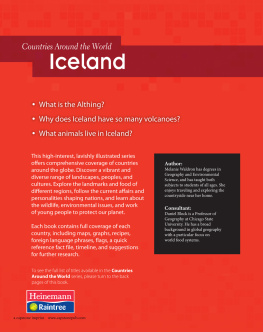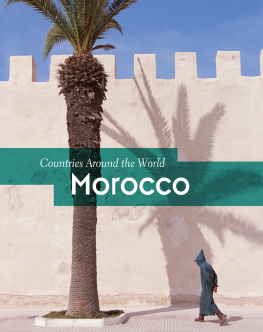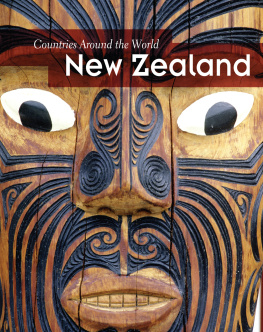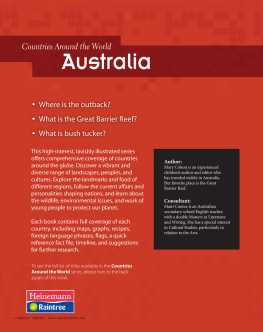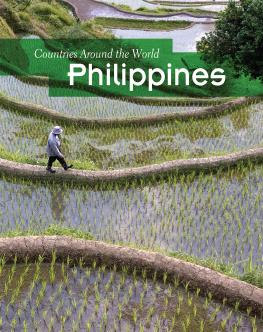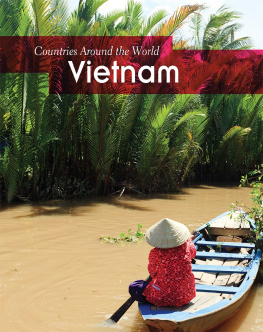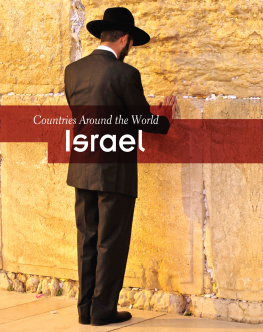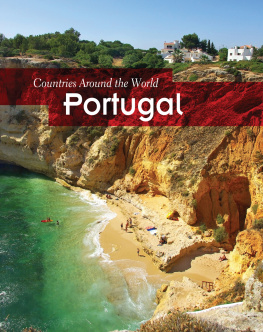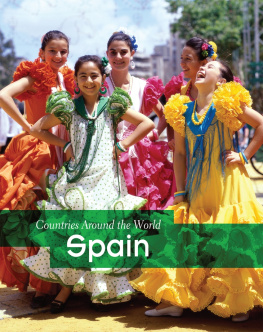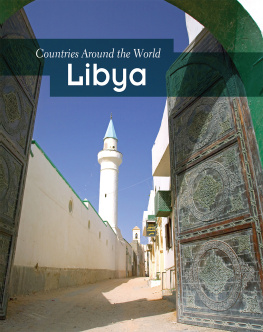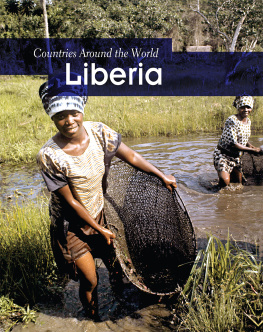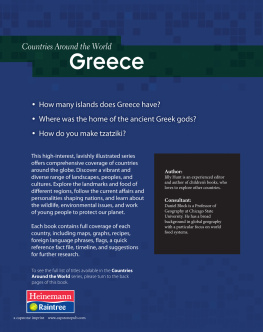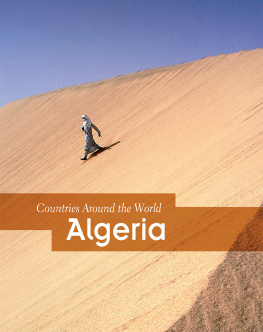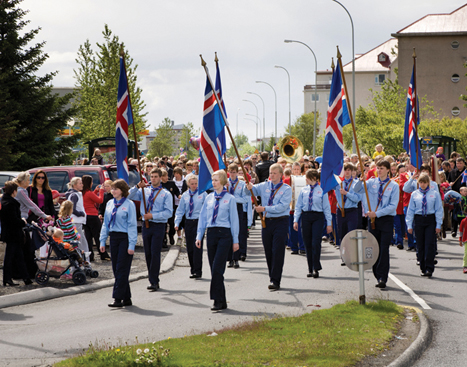In early 2010, Iceland was being watched by people all over the world. Many airplanescould not fly because of an enormous cloud of ash that was covering the skies overnorthwest Europe. The ash was coming from a volcano in Iceland called Eyjafjallajkull,which was erupting. Aircraft engineers were worried that this ash could clog airplaneengines and cause them to crash. The eruption eventually stopped in May 2010, andflights resumed as normal.
You may have heard about the ash cloud and Iceland. What else do you know about thecountry? Its name suggests a cold, barren country, covered in snow and ice. But thereis so much more to Iceland.
Iceland is often called the land of fire and ice. Much of the country is coveredby huge ice caps and glaciers , but these frozen areas are dotted with volcanoes.Many of these are active. Along the coast there are many fjords and little islands.Most people live around the coastal areas.
Iceland is an island in northwest Europe, located in the northern part of the AtlanticOcean. The United Kingdom and Norway are to the south and east, and Greenland andCanada are to the west. Iceland is slightly smaller than the state of Kentucky andhas a very small population of just over 300,000 people. It is a beautiful island,with amazing scenery and some vast empty spaces. Icelanders live a very modern and cosmopolitan life. There is much more to Iceland than just fire and ice!
History: A Young Country
Icelands position, just below the Arctic Circle and in the middle of the AtlanticOcean, meant that early explorers did not know it existed. It was simply too farnorth and too far away. The Greek explorer Pytheas may have been the first to writeabout an island far to the north of Britain, in 330 BCE. The first regular visitorsto Iceland were most likely Irish monks in the 700s CE. They traveled there lookingfor a quiet, uninhabited place where they could devote themselves to prayer.
The first settlers to arrive and stay in Iceland were Vikings from Norway and Sweden.They started coming from around 850 CE. They traveled across the ocean in open boatswith all their belongings, including their farm animals! In order to decide whereto land on the island, one settler, named Inglfur Arnarson, followed an old custom.He threw the wooden pillars of his chieftains seat into the sea, just off the coastof Iceland. He followed these pillars along the coast to see where the sea washedthem up, and that is where he settled. He called this place Reykjavk. Today, itis Icelands capital city.
The worlds oldest parliament
By 930 CE Icelands settlers decided that they needed some kind of government. Theislands chieftains gathered to create the Althing , now recognized as the worldsoldest parliament . The Althing met for two weeks every year at a place called Thingvellirin southwest Iceland.
In 1000 CE the Althing met to settle the issue of religion. There had been disputesbetween pagans and Christians, and the Althing eventually decided to convert Icelandto full Christianity.
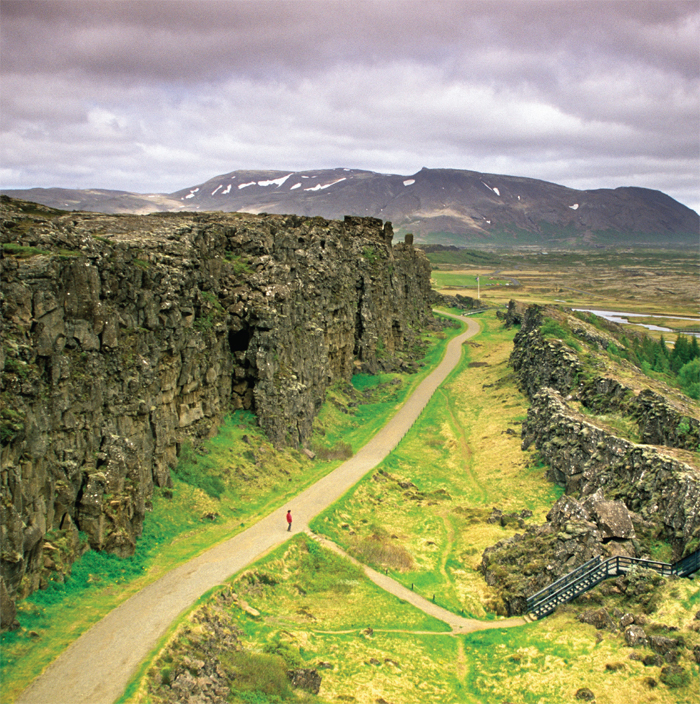
The long ridge of rock at Thingvellir was where speakers would stand to address theAlthing.
The Sturlung Age
From the late 1100s, Icelandic society started deteriorating. There was fightingbetween rival chieftains, and farms and homes were raided. By 1220, six wealthy familiesruled the whole island, and by 1262 they had all agreed to be ruled by the king ofNorway. This time of upheaval was known as the Sturlung Age, after the largest wealthyfamily, the Sturlungs. Although the Althing still existed under Norways rule, ithad very limited power. In 1397, control of Iceland then passed to Denmark afterNorway, Sweden, and Denmark united.
As well as suffering from political upheaval, Icelanders also suffered from naturaldisasters during this time. Cold, hard winters killed many crops and animals, andvolcanic eruptions covered a third of the island in ash. The Black Death arrivedin Iceland in 1402, and in less than two years it wiped out half of Icelands population.
How to say...
| rule | regla | (REG-la) |
| independence | sjlfsti | (SYALV-sty-thi) |
| farm | b | (BYE-r) |
| winter | vetur | (V-etur) |
| eruption | gos | (GO-os) |
| import | innflutningur | (INN-flutningur) |
| export | tflutningur | (OOT-flutningur) |
Return to independence
By the 1800s, many Icelanders were demanding independence . At the same time, townswere growing bigger and people were importing modern farm equipment and wood forboats. They were also exporting livestock, wool, and fish. In 1918, Iceland signedthe Act of Union, which made the country an independent state within Denmark. WhenDenmark was occupied by Germany during World War II, Iceland took the chance to takecontrol of itself again. Finally, on June 17, 1944, Iceland became completely independent.
Icelanders celebrate Independence Day every year on June 17.
20th-century Iceland
Iceland has never had a strong military force. During World War II, therefore, U.S.troops were based at Keflavk in southwest Iceland, leaving in 1946. Iceland joined NATO in 1949, and the United States returned in 1951, when the threat of war withthe USSR seemed a possibility. U.S. forces stayed there until 2006, when the militarybase was finally closed.
After World War II, Iceland saw a lot of development. The main road around Iceland(the Ring Road) was completed in 1974, and power stations were built. The fishingindustry grew, and Iceland exported fish to many European countries. This broughta lot of money into the country, and much of it was spent on modernizing Iceland.The huge expansion of the fishing industry also led to the cod wars with the UnitedKingdom. Icelands trawlers were sailing further and further from the Icelandic coastto find fish. The United Kingdom disagreed with this because it wanted to fish inthat part of the sea, too. The British Navy sent ships to protect British trawlersfrom the Icelandic coastguard boats, which were cutting their nets. In 1976 bothcountries agreed on fishing areas, and the "cod wars" ended.

